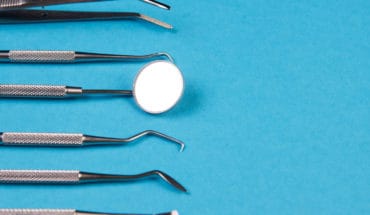Joint Health Through the Decades: Navigating the Ages with Nutrition, Exercise and Supplements with expert advice from Revive Active Brand Ambassador, Tina Lond-Caulk aka The Nutrition Guru and Caroline Idiens.
As we journey through life, our bodies undergo various changes, and our joint health is no exception. Our bodies are like fine wine – they get better with age, but they also need some extra care. So, whether you’re in your 20s, 30s, 40s, 50s, or even beyond, let’s dive into the world of joints and how you can support them (with a little bit of help from my friend and colleague, fitness coach Caroline Idiens, @carolinescircuits.
Your 20s: Building a Strong Foundation
Your 20s are a time of growth and development, and this includes your joints. During this period, it’s essential to lay a strong foundation for future joint health. Here’s how:
- Stay Active: Regular exercise helps strengthen the muscles around your joints and improves joint stability. Caroline, who runs popular 30 minute online strength workouts adds, “Flexibility exercises are also key – moving your joints to their full range of motion will really help. Ensure you always warm up for ten minutes before exercising but with dynamic stretches rather than static to loosen up the joints”.
- Balanced Diet: Focus on a well-rounded diet rich in healthy fats like extra virgin olive oil, lean proteins, fruits, vegetables, and whole grains. Omega-3 fatty acids found in oily fish, walnuts and chia seeds along with Polyphenols in EVOO (extra virgin olive oil) have been shown to reduce inflammation.
Your 30s: Maintenance Mode
Welcome to the maintenance phase, my 30-something pals. Your joints might be whispering some secrets, but you’ve got this:
- Pump Some Iron: Alongside regular cardiovascular workouts, strength training is your new best friend. It keeps those joints stable and bones happy. Caroline Idiens adds, “When you use resistance-based exercises you also stimulate new bone cell growth and can improve the health of existing bone. You can also do bodyweight exercises instead of heavy weights and do exercises such as squats and lunges – all functional training will help joints move freely, improve mobility and therefore help in daily activities preventing injuries as we age.”
- Nutrient-Rich Feasting: Load up on vitamin C, zinc, and copper-rich foods. They’re like secret agents for maintaining joint integrity.
Your 40s: Navigating the Waves
In your 40s, you might begin to notice some discomfort. It’s crucial to adapt your lifestyle and nutrition to accommodate these changes:
- Low-Impact Exercise: Whilst it’s important to maintain cardio exercise such as walking, mix it up with lower-impact exercises like swimming, cycling, or yoga to reduce joint stress. Caroline says, “Correct posture, alignment and good balance will help your joints and prevent falls and instability. Add core strengthening exercises to your workouts – yoga and pilates will really help with this. However, it’s important to stress that whilst you can obviously build in lower impact exercises to your routine if you wish, it’s the resistance training and strength which are so key in the midlife years for bones and muscles.”
- Spice it Up: Add some anti-inflammatory superheroes like turmeric, ginger green tea, EVOO and a Mediterranean antioxidant rich diet.
Caroline explains,
“As we approach midlife and especially from the age of 40 onwards we definitely need to focus more attention on our bones and joints. As we age, joint movement becomes stiffer and less flexible due to the decrease of lubricating fluid inside the joints and the cartilage becoming thinner (osteoarthritis). Ligaments also tend to shorten and lose some flexibility, making joints feel stiff. In addition, after the age of 35 our bone density decreases due to the decline in oestrogen and there is a greater risk of osteoporosis and fractures. My workouts focus on strength training exercises which really home in on individual muscle groups and how when we put them together in functional training we can future proof our bodies.”
Your 50s: A Proactive Approach
Now we’re getting serious, my fabulous 50s crew. It’s time to be proactive and show those joints some love:
- Consult a Professional: Regular check-ups with a healthcare provider such as your GP or physiotherapist can help monitor and manage joint conditions.
- Maintain a Healthy Weight: Excess weight places additional stress on your joints, so focus on maintaining a healthy weight.
Beyond 50: Aging Gracefully
As you age beyond your 50s, it’s essential to continue prioritizing joint health:
- Keep it Moving: Keep up with your daily walks and listen to your body! Caroline expands, “Some may like to continue with a HIIT class or a longer run and others may prefer pilates or lower impact exercises. But the thing to remember is that all movement counts and all movement adds up – even 10 minutes a day. Strength training is so key in this age bracket pre and post menopause so try and remember those weights!”
- Incorporate Omega-3s and stick with an anti-inflammatory Mediterranean diet: Don’t stop those omega-3 supplements – they’re your lifelong buddies for managing inflammation along with a nutrient dense anti -inflammatory Mediterranean diet.
Supplements: Whatever your age, I recommend considering adding a super supplement to your regimen to support your joint health and mobility. Sadly our modern western diet is often lacking in key nutrients such as omega 3 fats, Vitamin D, magnesium and iron, so incorporating a scientifically formulated, multi-faceted super supplement will ensure you’re getting essential nutrients for overall health.
Try a super supplement like Joint Complex by Revive Active with 10 active ingredients (including marine collagen, hyaluronic acid, glucosamine and MSM) that work in harmony to support your joints, cartilage, bones, connective tissue and muscle function. If you undertake lots of regular exercise, specifically endurance sports including marathons, triathlons or iron man challenges – this is a must!
Joint health is like a lifelong friendship – it needs nurturing at every stage of life. Remember, consulting a healthcare professional is your secret weapon for crafting a custom joint health plan. By giving your joints the TLC they deserve, you’ll keep dancing through life, , and happy as can be!
- Gut microbiome could delay onset of type 1 diabetes - 3rd April 2025
- The da Vinci 5 Robot Is Set To Transform Bariatric Care: - 31st March 2025
- Beyond money: the hidden drivers fuelling child food insecurity - 31st March 2025






